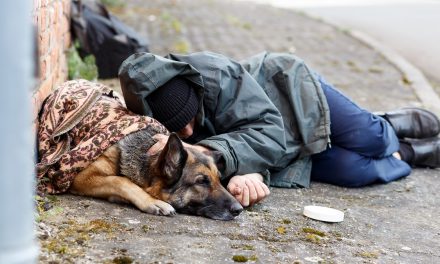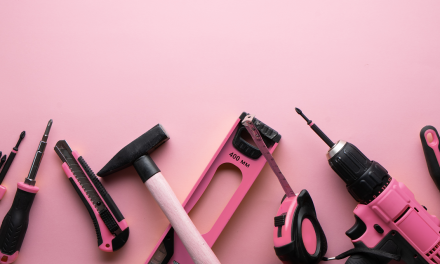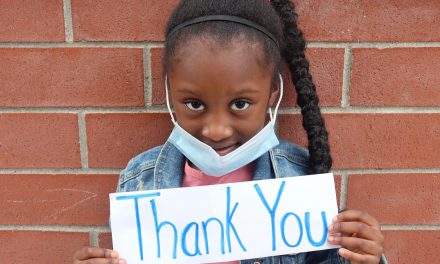Pride Month may be over, but its tenets are relevant year round. Since its creation following the 1969 Stonewall Uprising, Pride Month has served as both a time of celebration for LGBTQ+ people as well as a reminder of the advocacy work left to be done. Pride, held each June, offers a safe space for LGBTQ+ people to be their authentic selves while being uplifted by a community of peers and allies. It also provides a crucial opportunity to raise awareness of challenges faced by LGBTQ+ people and educate allies on creating more safe spaces year-round.
For LGBTQ+ youth, Pride can offer a moment of relief, providing access to information, support, and community that may not otherwise be available or accepted. According to The Trevor Project, the world’s largest provider of LGBTQ+ youth suicide prevention, advocacy, and support, LGBTQ+ youth are prone to suicide — not because of their sexual orientation or gender identity, but because of how they are mistreated and stigmatized due to these factors.
Supporting LGBTQ+ Youth in Our Communities, a recent webinar hosted by Mental Health America (MHA), explored the mental health challenges LGBTQ+ youth face and how communities can actively improve these concerns with identity-affirming support. The webinar included panelists who are members or allies of the LGBTQ+ community and have a wide range of expertise researching, navigating, and championing efforts to improve mental health among LGBTQ+ youth.
Panelist Cyn Gomez, a first-generation bisexual and transgender person, has found both in his personal experiences and in his advocacy work that peer-to-peer support is a primary need for LGBTQ+ youth. Young people who are exploring their identity need support networks that include other people who can relate to their experiences specifically regarding age, community, political climate, familial and societal culture, and religion.
For panelist Casey Pick from The Trevor Project, Pride has been a “beacon of light” in dark places, offering refuge to alienated youth looking for support and to new allies wanting an opportunity to step up. Pick avoided church for a long and difficult period following the loss of a parent, feeling as though it couldn’t provide the comfort she sought. However, when she was able to take communion at a booth during a Pride event, she felt the celebration become personal. “That felt like all of me was there and being invited to it,” she said.
All panelists, despite their varied personal experiences, agree that the first step to improving mental health in LGBTQ+ youth is to create a network of identity-affirming support around young people that extends beyond Pride. This network includes family, friends, school administration, health care providers, and other community members. Everyone in these networks is encouraged to actively educate themselves on LGBTQ+ issues and resources to help navigate questions and challenges that may arise as a child explores their identity.
Mental Health Among LGBTQ+ Youth
Every year, The Trevor Project surveys more than 30,000 young people on a wide range of mental health related questions. Among the 82% of LGBTQ+ youth who wanted mental health care in the past year, 60% were not able to receive it. The top ten reasons LGBTQ+ youth who wanted mental health care but did not get it are:
- Fear of discussing mental health concerns (48%).
- Concerns with obtaining parent/caregiver permission (45%).
- Fear of not being taken seriously (43%).
- Lack of affordability (41%).
- Fear of care not working (34%).
- Fear of being outed (29%).
- Fear of identity being misunderstood (26%).
- Concerns with receiving virtual care at home (23%).
- Lack of transportation options (21%).
- Lack of parent/caregiver permission (20%).
According to Pick, one of the reasons for The Trevor Project is simply the fact that LGBTQ+ people feel more comfortable talking to a lifeline specific to LGBTQ+ people and their experiences. Crises can be compounded if someone is triggered while they’re seeking crucial support. Misgendering someone or asking patients to identify as male or female on an intake form can appear as a bias, even if unintentional, and steer patients away from seeking further support.
Pick recalled an experience where she opened up to a provider about being queer, only to later find out she had been identified as “high risk,” leading her to feel unsafe continuing care with them. “What are they telling you, and how are you hearing that?” she said, encouraging providers to explore how implicit bias may affect their care.
LGBTQ+ youth face discrimination, stressors, and threats or actualization of physical harm simply due to who they are. For youth of color, these challenges are compounded by racism; for transgender and nonbinary youth, these challenges are compounded by misconceptions about gender and sex.
Last year, LGBTQ+ youth who felt high social support from their family reported attempting suicide at less than half the rate of those who felt low or moderate social support. LGBTQ+ youth who found their school or community to be LGBTQ-affirming also reported lower rates of attempting suicide.
However, many LGBTQ+ youth don’t feel supported at home, school, or within their community at large, especially transgender and nonbinary youth and LGBTQ+ youth of color. Last year, 45% of LGBTQ+ youth seriously considered attempting suicide. Nearly one in five transgender and nonbinary youth attempted suicide, with LGBTQ+ youth of color reporting higher rates than their peers.
Supporting LGBTQ+ Youth
As part of The Trevor Project’s annual survey, respondents are asked to identify how they can and prefer to be supported. The top five ways parents and caregivers can support LGBTQ+ youth are:
- Be welcoming to LGBTQ+ friends and partners of their child.
- Talk with their child and their friends/partners respectfully about their identity.
- Use gender-affirming language, such as the correct name and pronouns, consistently.
- Support their child’s gender expression.
- Educate themselves about LGBTQ+ people and issues, throughout history and in the present.
LGBTQ+ youth also report feeling supported when seeing themselves represented in the media they consume, whether it be athletics, entertainment, or educational material. Exposing them to a wide variety of identities and their differing experiences may also give them the words to speak up about their own.
These measures are not exclusive to families of LGBTQ+ youth, but their schools and communities as well. Prioritizing these approaches helps create identity-affirming spaces for youth, allowing them to navigate their identity journey safely.
This is especially important amidst the recent wave of anti-LGBTQ+ legislation threatening access to identity-affirming health care, support resources, and spaces. According to The Trevor Project:
- 93% of transgender and nonbinary youth reported worrying about transgender people being denied access to gender-affirming medical care due to state or local laws.
- 91% of transgender and nonbinary youth reported worrying about transgender people being denied access to the bathroom due to state or local laws.
- 83% of transgender and nonbinary youth said that they have worried about transgender people being denied the ability to play sports due to state or local laws.
“I am who they are targeting, I am who they are silencing,” said Gomez, who admits he would not be here today without the support and education he received. Gomez calls recent anti-LGBTQ+ legislation “an act of genocide,” targeted violence against a community that has historically had to fight.
To improve mental health and wellbeing among LGBTQ+ youth, families and communities need education and support to make sure children are protected, safe, and assured that they have people on their team. However, LGBTQ+ people also need to be equipped with the language, tools, education, and support to become administrators, providers, and policymakers with the power to create change themselves.
MHA’s Schroeder Stribling, who moderated the webinar panel, sees hope for the future by looking to the past. In her 55 years, she has lived through both the Stonewall Riots and the legalization of gay marriage in the United States. Though there is backlash to this progress today, she is hopeful and prideful of the work continuing to be done. On a closing note, she shared MHA’s mantra, “We will fight in the open.”
LGBTQ+ Youth Mental Health Resources:








